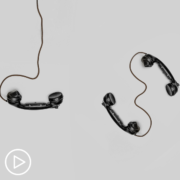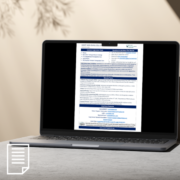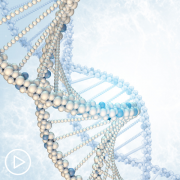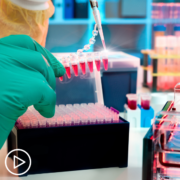Improving Communication Around Lung Cancer Biomarker Testing
Improving Communication Around Lung Cancer Biomarker Testing from Patient Empowerment Network on Vimeo.
How can communication around lung cancer biomarker testing be improved? Experts Dr. Heather Wakelee and Dr. Leigh Boehmer share advice for framing conversations with patients about biomarker testing and ways to adjust communication to different learning styles.
See More from Lung Cancer | Empowering Providers to Empower Patients
Related Resources:
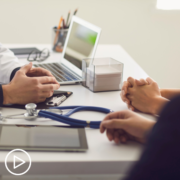
Patient-Provider Relationship Role in Lung Cancer Biomarker Testing |
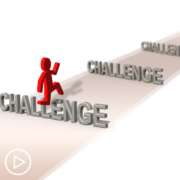
|

How Are Barriers in Lung Cancer Biomarker Testing Being Addressed? |
Transcript:
Dr. Nicole Rochester:
I just want to talk a little bit about that communication, because most of you have shared how important that communication is, and we know that there are challenges, inside and outside of cancer with regard to communicating with patients, and certainly as a physician that some of the complexity of the topics that you all have discussed I would admit is even a lot for me, and so we can imagine that for someone without any medical training, this is very difficult, these topics of biomarker testing and genetics and mutations and precision medicine. So I’d love for you, Dr. Wakelee, to start by just sharing some best practices, things you’ve learned over the years with how can providers who are watching this program really engage in effective, thoughtful conversations with patients and their family members about biomarker testing?
Dr. Heather Wakelee:
So that’s a great, great question. And really, the communication is to me, like I said, the core there, when I’m talking about biomarker testing with the patient, I usually try to frame it from the context of what makes the cancer different than the rest of you. And what we’re trying to figure out is what is it about the cancer that makes it different than the rest of you, so we can then target what’s different, and hopefully with that, being able to control the cancer without harming the rest of you. So that’s sort of one framework of it, and depending on the patient’s level of understanding, and then sort of layer in different levels of…for people who are understanding DNA and mutations, then you can start talking about those specifics, and for folks who don’t necessarily want to think about it that way, or haven’t had the education about it that way, then just starting from that framework. And I think about it this way too, is how is the cancer different than the rest of the person? And what can we do to therefore attack the cancer differently than we would the rest of the person?
And then from there, if there is a mutation or a translocation or something else that we found, can use the name of that gene and say, “This is different in the cancer than in the rest of you, and this is a targeted therapy that’s going to go after that, and it’s going to work for a period of time, but the cancer is always evolving.” And so we kind of plant that seed from the beginning also, that it’s not curing, that the cancer continues to evolve, and eventually it’s going to change in a way where that doesn’t work, but for right now, that’s the best treatment. So that’s how I’m going about with that communication with people on it. And then, again, I practice in Silicon Valley, so a lot of people will come in with books, practically, of all the research that they’ve done, and so that’s a very different conversation than someone who comes in and says, “Whatever you think is best, doc.” And even when I hear that, which I don’t happen to hear too often anymore, I really feel it’s critical that the patient is still understanding, why are we picking this treatment for your particular cancer, and what are our expectations from it?
Dr. Nicole Rochester:
I really appreciate the plain language, and I think that’s important, and also your acknowledgment that patients come to us with different levels of knowledge and expertise, and so really it’s about meeting them where they are, so I really appreciate that. And, Dr. Boehmer, we’re going to allow you to wrap up on this topic, I know that the Association of Community Cancer Centers has done research about what patients want to hear and some of the biases around providers, maybe thinking that patients don’t want or don’t need some of this information, that it may be too confusing for them, so I’d love for you to share some knowledge around your experience in this area and some best practices around communicating with patients.
Dr. Leigh Boehmer:
Thanks very much, I appreciate the opportunity, I’ll try and keep it targeted. I think number one, Dr. Wakelee, you’re correct. We have visual learners, auditory learners, we have people that want more direction and less direction, so simply starting by asking, how do you prefer to learn? It’s a wonderful place to start. It could be drawing pictures, it could be giving them that academic print out of literature published in a cutting-edge journal. But we need to know how patients learn and respect the fact that we’re all individuals and we as providers talking to patients may need to alter our approach based on different patients’ characteristics. I also think our research has shown that consistent terminology must, must be utilized, biomarker testing, molecular profiling, next-generation sequencing, mutation analysis, whatever it is, that you have decided to make your consistent terminology, please in your teams, then in the next level of teams, then in your health system, and then with your colleagues, talk about what it is, why it is, does it go against another group or is it in agreement with A, B, C groups. Because we have to, as a collective, really agree on and start utilizing consistent terminology, because until we do, we’re just continuing to stir the pot and cause confusion amongst patients, caregivers, other patient advocacy organizations and ourselves.
The other thing I’ll say, at ACCC, we’ve got a lot of resources aggregated in one place about shared decision-making, what it is, how to do it, how to assess yourself, health literacy, how do you evaluate your program to make sure you’re asking the right questions before you ever, ever have a conversation with a patient about biomarker testing or different targeted treatments for patients with non-small cell lung cancer? There’s little things that you can do today that’s so important. Little things you can do today that will make a positive influence on your patients’ outcomes and experience just by asking, addressing your own biases, being inclusive with your language and using consistent terminology. All of that is on our website and it’s truly incremental. Go easy on yourself, we’re all learning here, and acknowledging your bias and trying to be more inclusive is very, very worthwhile, and it’s okay if it’s small steps every single day made.

